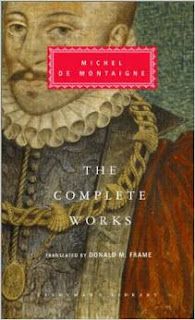Message from the Vessel in a Dream. By Christopher Luna. First Flowstone Press Edition, 2018, 130 pages. Printed Matter Vancouver VSCL.
Amazon Review by Mike Garofalo:
This is a fine collection of poems authored by Christopher Luna. His poems are mostly in free verse, hip, Beat style, and contemporary. His justified anger about contemporary injustices and oppression are told in his verses. Mr. Luna’s command of creative Beat Style poetic techniques is impressive. He uses prose narratives, quotations, asides, conversational block poems, italic formatted comments on poets and poetry, references to books and articles, abstract and philosophical ruminations at times, and he provides fresh insights. Most of his carefully crafted poems fit on one page. He is frank and open about sexuality, friendships, drugs, parties, contemporary issues, and alternative lifestyles. His sophisticated bluntness and direct manner are invigorating. His poems are mostly about people, not places or nature. I found his Collage Poems technique (Fecund Labyrinth, pp.61-111) very interesting; and his interest in the Investigative Poetry techniques from Ed Sanders to be stimulating.
I find his poetic messages robust, earthy, life loving, and free, for example: “when awake/ each moment/ is a glorious/ potentially transformative/ high energy, construct/that opens slowly, deliberately/ like the lotus petals/ of a woman’s vulva/ as we stand in awe/ scribbling furiously/ hoping to get it all down/ needing to get it right, dammit.” p.37
I have also purchased two of his edited anthologies: Ghost Town Poetry, Open Mic: Volumes 2 and 3; reviewed elsewhere. Also, Good Reads!
I prefer his other good collage art works rather than the astronaut one used on the cover of this engaging book. But, never judge a book by its cover.
The book provides a detailed autobiography and information about other "Rebel Angel" post-modern poets who have influenced him: Allen Ginsberg, Niki Giovanni, Amiri Baraka, Anne Waldman, Ed Sanders, and Diane di Prima." Mr. Luna is an active leader of poetry Open Mic sessions, a literary coach, an editor, a collage artist, film critic, researcher, jazz musician, and social activist in the City of Vancouver, Washington State. He is an “Outsider,” with an MFA from the Jack Kerouac School of Disembodied Poetics from Naropa University in 1999. He was the Poet Laureate in Vancouver from 2013-2017.
A book deep enough for rereading!
Ghost Town Poetry: Cover to Cover Books, 2004-2010: An Anthology of Poems from the Ghost Town Open Mic Series. Edited by Christopher J. Juna and Toni Partington. 2011, 134 pages. VSCL.
Ghost Town Poetry: Volume Two, 2004-2014. Edited by Christopher Luna and Toni Partington. Cover to Cover Books, Printed Matter Vancouver, WA, 2014, 98 pages. FVRL.
Ghost Town Poetry Open Mic: Volume Three, 2004-2024. Edited by Christopher Luna, Toni Lumbrazo Luna, and Morgan Paige. Printed Matter, Vancouver WA, 2024. 149 pages. Purchased at Birdhouse Books in Vancouver, WA. VSCL.
Amazon Review by Mike Garofalo:
I was first made aware of this interesting collection when I
read a copy of the book borrowed from the Fort Vancouver Regional Library. I
found the books artwork, the good poems, and the collage by Christopher Luna to
be appealing.
The introduction by Mr. Luna was highly informative and
would be useful for anyone trying to establish a local Open Mic poetry reading
series in a community. Clark County has over a half million residents, so the
nearby fan base of poetry lovers is considerable in the Vancouver, Washington
State area where I live. Many interesting people shared their experience,
reflections, and poetic compositions.
The poems are challenging, contemporary, hip, inclusive,
liberal, woke, and lively. Hearing them read by the authors to the Vancouver
Open Mic crowd must have been delightful and thought-provoking.
Although I have lived in Vancouver since 2017, I have never
attended an Open Mic session and have not yet met Mr. Luna. I intend to attend
my first Open Mic session in Vancouver in April of 2025.
This anthology was edited by Christopher Luna and Toni
Partington in 2014.
After reading this book, I purchased “message from the
vessel in a dream” authored by Mr. Luna. A very worthwhile purchase for me;
reviewed elsewhere. Also, at the local Birdhouse Books bookstore, I purchased a
new copy of “Ghost Town Poetry Open Mic: Volume Three, 2004-2024, edited by
Chris Luna, Toni Lumbrazo Luna, and Morgan Paige, $20.00.
At 98 pages, this is the smallest chapbook of the three Open
Mic anthologies. A very good bargain for a paperback on Amazon.
Book Reviews by Mike Garofalo










